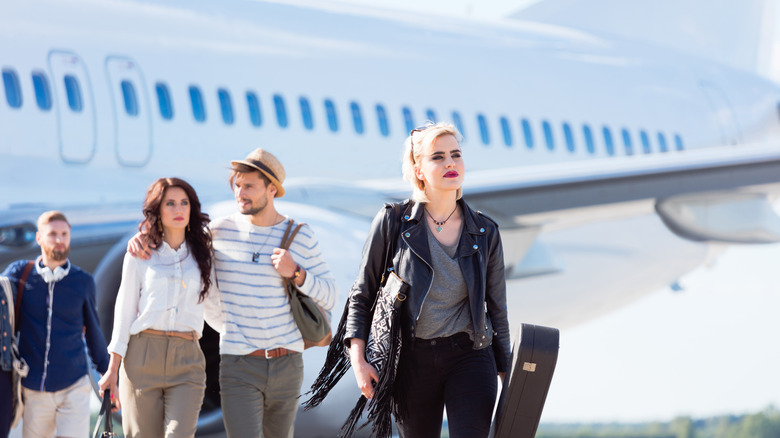The Unexpected Reason Your Flight Might Have Landed Way Earlier Than It Should've
Flight delays are an all-too-common travel headache that can seriously derail your plans — you might miss your connecting flight, arrive too late for your hotel check-in, or lose precious sightseeing time. So, if your flight arrives earlier than expected, it can feel like winning the travel lottery.
However, early arrivals don't boil down to pure luck. Weather — the factor that causes over 75% of air travel delays, according to the Federal Aviation Administration — might also lead to an early landing. That's what happened to some flights traveling east across the Atlantic Ocean in November 2023, The New York Times reported. A strong jet stream was helping to push the planes along their routes, resulting in up to an hour of saved time in the air. Something similar happened in 2019 when a jet stream propelled a flight to a record-breaking ground speed of 801 miles per hour (per Washington Post).
Kevin Kuhlmann, a professor of aviation and aerospace science at the Metropolitan State University of Denver, explained to The New York Times that jet streams are a common and somewhat predictable meteorological phenomenon. In the summer months, jet streams tend to occur far up in the northern hemisphere, and as the temperatures dip in the fall and winter, they move south.
What causes jet streams?
Understanding how jet streams work could come in handy when planning your travel schedule. First, jet stream winds always blow from west to east, meaning your plane could get a speed boost when flying eastward, yet the opposite can happen when heading west. Jet streams form where hot and cold air meet, which explains why they tend to be stronger during the winter when there's a greater difference in temperature between the north and the south.
Besides seasonal temperature changes, storms can also influence jet streams. Storm Ciarán may have played a role in the early arrival of some flights in November 2023, according to Fast Company. Jim Foerster, the chief meteorologist at the consultancy DTN, revealed to the outlet that the intense winds of the storm, coupled with the jet stream, gave an extra push to flights traveling from the U.S. to Europe. "So, they didn't have to change their flight route. They just took advantage of an extremely strong jet stream," Foerster commented. "It was one of those things where everything was in the right place at the right time."
Weather isn't the only reason flights land early
Atmospheric winds are one explanation for a speedy landing, but in many cases, ahead-of-schedule arrivals were planned all along. That's because airlines strategically add minutes to their estimated flight times to accommodate delays. In other words, a flight that seems to have landed early isn't actually early at all. "The reality is you can't fix every single potential problem that could occur on a given day of travel, but you can build a little bit of padding into the schedule," Max Barrus, vice president of planning and revenue at Breeze Airways, told The Washington Post. "If you didn't do that, nobody would ever be on time."
Airlines haven't always added extra time to flights — or at least not to the extent that they do today. A 2018 research paper published by the Kellogg School of Management revealed that flight times increased by over 8% between 1997 and 2017, and not because modern planes fly slower than they used to. Rather, the researchers concluded that airlines strategically pad their flight times to avoid appearing delayed. The result for passengers: Flights take longer than they once did, even if they land before the arrival time printed on the boarding pass.


